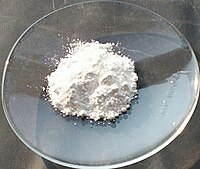
Nitric Oxide-Releasing Macromolecular Scaffolds for Antibacterial Applications.
Sign Up to like & getrecommendations! Published in 2018 at "Advanced healthcare materials"
DOI: 10.1002/adhm.201800155
Abstract: Exogenous nitric oxide (NO) represents an attractive antibacterial agent because of its ability to both disperse and directly kill bacterial biofilms while avoiding resistance. Due to the challenges associated with administering gaseous NO, NO-releasing macromolecular… read more here.
Keywords: oxide releasing; antibacterial applications; nitric oxide; scaffolds antibacterial ... See more keywords

Recent Advances on Carbon Monoxide Releasing Molecules for Antibacterial Applications.
Sign Up to like & getrecommendations! Published in 2021 at "ChemMedChem"
DOI: 10.1002/cmdc.202100555
Abstract: Carbon monoxide (CO) has been known as an endogenous signaling molecule in addition to an air pollutant. It plays a critical role in many physiological and pathological processes. Therefore, CO has been recognized as a… read more here.
Keywords: advances carbon; antibacterial applications; monoxide releasing; carbon monoxide ... See more keywords

AIE Macromolecular Materials for Antibacterial Applications.
Sign Up to like & getrecommendations! Published in 2023 at "Macromolecular rapid communications"
DOI: 10.1002/marc.202300104
Abstract: Recent advancements in aggregation-induced emission (AIE) macromolecular materials have brought their attention as potential antibacterial solutions, these materials offer new approaches to cure multidrug-resistant infections and biofilms in bacterial infections as well as real-time monitoring… read more here.
Keywords: aie macromolecular; macromolecular materials; antibacterial applications; materials antibacterial ... See more keywords

Surface modification of TiO2 nanoparticles with CuO for visible-light antibacterial applications and photocatalytic degradation of antibiotics
Sign Up to like & getrecommendations! Published in 2021 at "Ceramics International"
DOI: 10.1016/j.ceramint.2021.08.300
Abstract: Abstract This paper investigates the synthesis and characterization of photoactive TiO2/CuO nanocomposites for the simultaneous antibacterial applications and photocatalytic removal of Amoxicilline from wastewaters. Effective removal of biological and organic contaminants from water resources has… read more here.
Keywords: tio2; antibacterial applications; visible light; applications photocatalytic ... See more keywords

Enzyme–metal nanocomposites for antibacterial applications
Sign Up to like & getrecommendations! Published in 2021 at "Particuology"
DOI: 10.1016/j.partic.2021.02.003
Abstract: Abstract Metal nanoparticles have been used as antibacterial agents widely, and the combined use of enzymes and metal nanoparticles promotes antibacterial activity, achieving a synergistic effect. Additionally, enzymes decrease the amounts of metals and increase… read more here.
Keywords: metal nanoparticles; metal; metal nanocomposites; antibacterial applications ... See more keywords

Synthesis of Pyrrolidinium-Type Poly(ionic liquid) Membranes for Antibacterial Applications.
Sign Up to like & getrecommendations! Published in 2017 at "ACS applied materials & interfaces"
DOI: 10.1021/acsami.7b00387
Abstract: Pyrrolidinium-type small molecule ionic liquids (ILs), poly(ionic liquid) (PIL) homopolymers, and their corresponding PIL membranes were synthesized and used for antibacterial applications. The influences of substitutions at the N position of pyrrolidinium cation on the… read more here.
Keywords: ionic liquid; antibacterial applications; pyrrolidinium type; pil homopolymers ... See more keywords

Plasmon-enhanced photothermal properties of Au@Ti3C2Tx nanosheets for antibacterial applications.
Sign Up to like & getrecommendations! Published in 2022 at "Nanoscale"
DOI: 10.1039/d2nr05115j
Abstract: Antibiotic-resistant bacterial strains have become an ever-increasing public concern due to their significant threats to health safety. Nanomaterial-based photothermal treatment has shown potential in antibacterial applications, but many nanomaterials exhibited limited photothermal activity that may… read more here.
Keywords: antibacterial applications; plasmon enhanced; photothermal properties; enhanced photothermal ... See more keywords

Bio-inspired special wettability in oral antibacterial applications
Sign Up to like & getrecommendations! Published in 2022 at "Frontiers in Bioengineering and Biotechnology"
DOI: 10.3389/fbioe.2022.1001616
Abstract: Most oral diseases originate from biofilms whose formation is originated from the adhesion of salivary proteins and pioneer bacteria. Therefore, antimicrobial materials are mainly based on bactericidal methods, most of which have drug resistance and… read more here.
Keywords: bio inspired; oral antibacterial; antibacterial applications; wettability oral ... See more keywords

Synthesis of ZnO/Au Nanocomposite for Antibacterial Applications
Sign Up to like & getrecommendations! Published in 2022 at "Nanomaterials"
DOI: 10.3390/nano12213832
Abstract: Annually, antimicrobial-resistant infections-related mortality worldwide accelerates due to the increased use of antibiotics during the coronavirus pandemic and the antimicrobial resistance, which grows exponentially, and disproportionately to the current rate of development of new antibiotics.… read more here.
Keywords: zno nanorods; antibacterial applications; nanocomposite antibacterial; zno nanocomposite ... See more keywords

Antibacterial Applications of Nanomaterials
Sign Up to like & getrecommendations! Published in 2023 at "Nanomaterials"
DOI: 10.3390/nano13091530
Abstract: In the 21st century, infections remain a major problem for society and are one of the leading causes of mortality [...]. read more here.
Keywords: antibacterial applications; applications nanomaterials; nanomaterials antibacterial;

Photo-Stimuli-Responsive CuS Nanomaterials as Cutting-Edge Platform Materials for Antibacterial Applications
Sign Up to like & getrecommendations! Published in 2022 at "Pharmaceutics"
DOI: 10.3390/pharmaceutics14112343
Abstract: Photo-stimuli-responsive therapeutic nanomaterials have gained widespread attention as frontline materials for biomedical applications. The photoactivation strategies are classified as single-modality (based on either reactive oxygen species (ROS)-based photodynamic therapy (PDT), hyperthermia-based photothermal therapy (PTT)), or… read more here.
Keywords: antibacterial applications; stimuli responsive; responsive cus; photo stimuli ... See more keywords